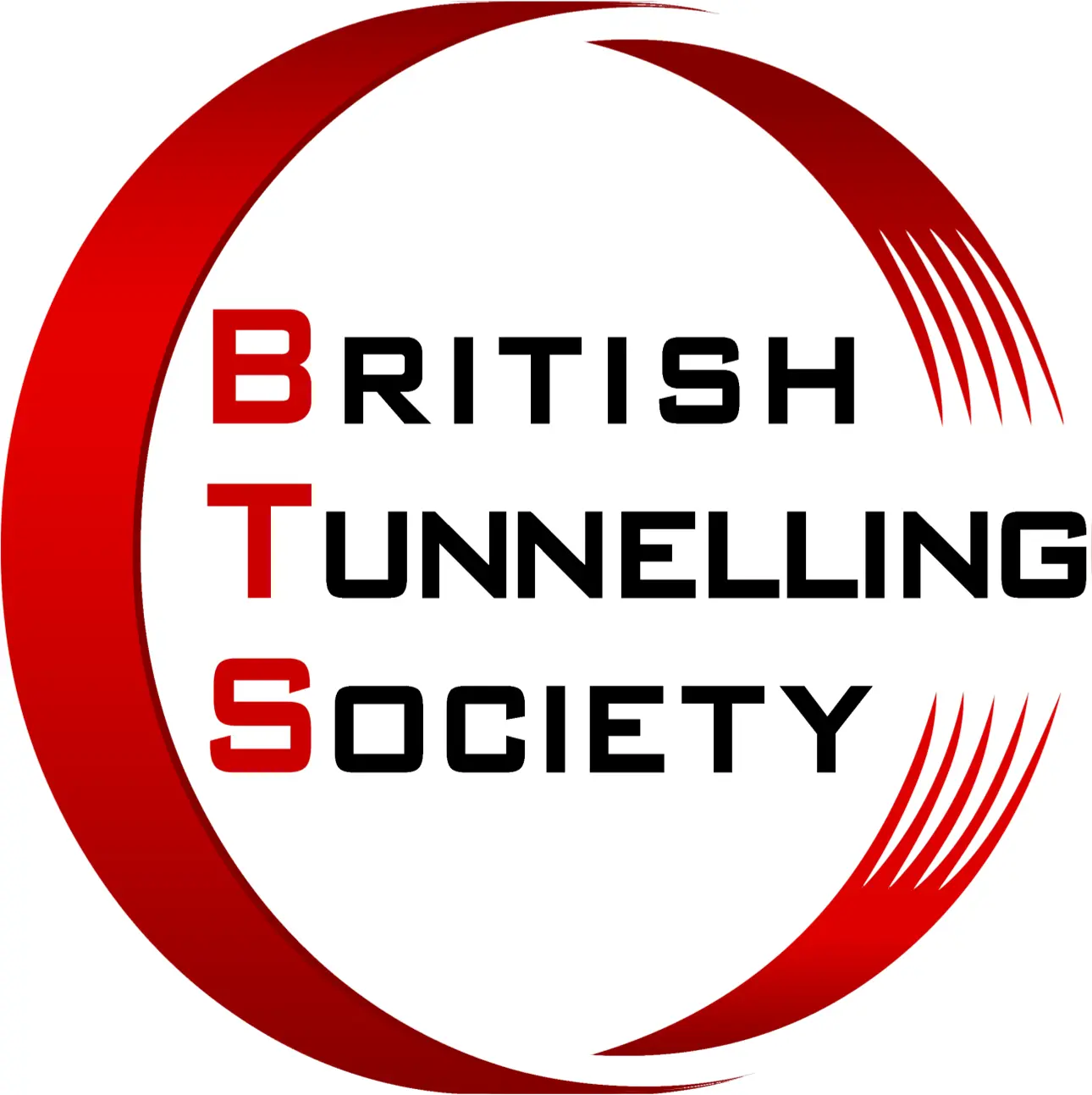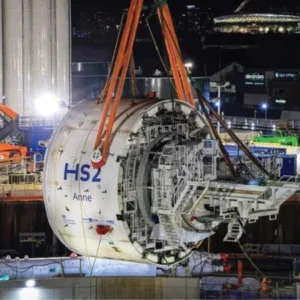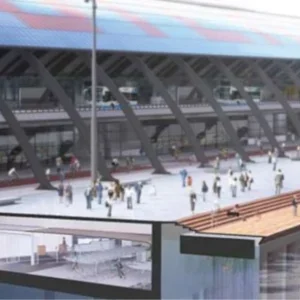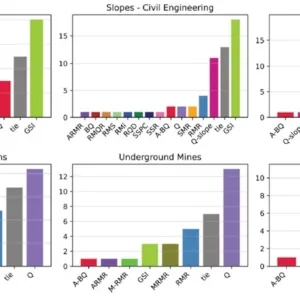The Bømlafjord sub-sea tunnel, located in Hordaland County on the west coast of Norway, is part of the Triangle Link Project which will connect three local communities (Bømlo, Stord and Fitjar) to the mainland, as well as several large industrial companies and shipyards. With its large developed industry and central position, this island community is an important supplier to Norway’s flourishing oil industry.
The consequences for the environment have been thoroughly investigated in a number of independent reports. As a result, the project has been adjusted to meet special requirements and the total cost has increased.The main condition was that the road had to be planned to take into account the environmental impact. The Triangle Link project is also a very important link for the main E-39 road on Norway’s west coast.
The Triangle Project consists of:
The tunnel is the longest sub-sea road tunnel in Europe. It has been excavated from Sveio on the mainland in the south and from Stord on the island of Føyno in the north. The contract for the south access at Sveio was awarded to the Norwegian Public Roads Administration, Hordaland’s own in-house contractor, whereas the north access at the island of Føyno was awarded to a JV of NCC Eeg-Henriksen Anlegg AS and NCC AB Sweden. Construction of the south access started in September 1997 and the north in February 1998. Breakthrough took place on September 2 1999 after a construction period of almost two years. The tunnel and E-39 coast road were open for traffic in December 2000. The road and bridges to the island of Bømlo will be completed in April 2001.
Geology and pre-investigations
The bedrock on the mainland southeast of Bømlafjord consists of Precambrian basement rock: gneiss and mica schists, and is called the Halsnøy complex. The northwest part of Bømlafjorden, including Føyno and Otterøy islands, consists of Cambro-Silurian metamorphic cover rocks: greenstones and phyllite, known locally as the Hardangerfjord Cover complex. The geology along the whole tunnel has a strike approximately perpendicular to the tunnel line and dipping 20-40° northward.
Pre-investigations of the Bømlafjord Tunnel consisted of land-based field mapping and photo studies, offshore seismic profiles and core drilling. A seismic survey detected a major fault in the middle of Bømlafjord. Closer investigations revealed a massive depression with till. This fault was a controlling factor in the master plan for determining the tunnel’s depth.
Because a major portion (3.4km) of the tunnel was to be located under the fjord, approximately 7.8km of seismic profiles and 1485m of core drilling were included in the investigations. Very little sediment was observed along the tunnel line at the seabed except the major depression already mentioned at profile 4460 (3.5km from the southern access), and therefore water inflow was expected to be frequent.
Weakness zones were also observed in the Valevåg Sound (profile 3450) and between the islands of Føyno and Otterøy at profile 7350. Profile 7350 also had the lowest offshore rock cover along the tunnel alignment – only 35m. Based on this knowledge, profiles 4460 and 7350 were considered to be the crucial points, and rock conditions there would determine the depth of the tunnel. It was decided to investigate these positions further by means of core drilling.
Borehole 1 was drilled 900m offshore through profile 4460 and at level -178m below sea level (bsl) revealed a 66m long till zone. The borestring was drawn back 500m and new, deeper core drilling started from this position. At the same profile but now at level -207m bsl, no weakness zone was observed. At this level, the tunnel would have a crown level of -211m. Rock cover was then evaluated at minimum 6m and maximum 33m.
According to Norwegian Road Standard requirements, rock cover in sub-sea tunnels has to be 50m but can be lowered if sufficient investigations are performed. The expert group arrived at the conclusion that the tunnel should have not less than 35m rock cover at this point, so the tunnel gradient was increased from 7% to 8% down to the actual point. This lowered the tunnel to a level of -240m bsl, and gave a documented rock cover of 35m or more at this crucial profile.
Borehole 2 was drilled from Otterøy Island and 430m north under Otterøy Sound. Rock conditions in the expected weakness zone were quite favourable but major water inflow was expected as there were no sediments on the seabed above. It was decided to increase the rock cover from 28m to 35m, which involved a change in tunnel gradient from 7% to 8% and from the north access to profile 7350.
Since the first half of the borehole was not positioned directly above the tunnel line but farther to the west, worse rock conditions than expected appeared in the tunnel between profiles 3960 and 4000. Some crushed rock in core samples above profile 3780 to profile 3800 were expected to be surface-related but showed up at profile 3960 as a major crush zone.
Excavation
The Bømlafjord Tunnel, with an actual cross section of 82m², has been excavated in drill+blast from both sides with NCC Eeg-Henriksen’s Atlas Copco 188 3-boom jumbo and a Cat 980G wheel loader with sideloader on Føyno Island. A Komatsu excavator was used for for scaling and 7 MB and Volvo trucks (14m³) for transport. Air supply for NCC was provided by one GAL 14 fan.
At Sveio, the Public Road Authority used a 3-boom computerised drill jumbo from Andersen Mek Verksted of Norway, together with a Brøyt ED1000T. Cleaning the face with the Brøyt varied from 90-115 minutes. Using the electro/diesel Brøyt and Dyno Nobel‘s Site Sensitised Emulsion (SSE), a considerable improvement to the working environment was observed. At Sveio, a maximum of 11 Euclid R32 and Volvo A35 trucks and dumpers were at work. Clean air was introduced by a Korfmann 2 x 250kW AL17 fan. Computerised drill jumbos (for the Sveio side) and a computer drilling system provided by Bever Control (for the Føyno side) has reduced overbreak to a minimum.
Average weekly production on each face was 55m, with a productivity record of 96m. Total average production was 109m/week, (8900m3 of excavated rock). Planned production was 80m/week, which resulted in a reduction of six months for the production period.
For environmental reasons, spoil from the excavation on the island had to be loaded on to a barge provided by Norslep and transported by sea to the neighbouring community of Austervoll. This came to a total of almost 700 000 tonnes.
Each round of blasting was closely followed up by an on-site geologist. As a safety control, a programme of systematic probe drilling ahead of the face in areas below level 0 was implemented. An array of five probe holes with a length of 21-24m was drilled from the face for each three rounds. Leakage allowance at the face was limited to a maximum of 2 litres/probe hole or 5 litres at all holes in one round, with a total of 30 litres/100m of tunnel. If these limits were exceeded, extensive pre-grouting would take place until the limits were achieved. After 70% of the tunnel had been excavated, total leakage was less than 5 litres/100m. For this reason, the requirements were changed to 5 litres/probe hole and 10 litres from all holes jointly.
Most of the leakage and grouting took place in the gneiss and mica schist on the Sveio side and not under the sea as expected. The phyllite and greenstone/green schist appeared as quite dense and dry. A total of 54 grouting rounds and 282 tonnes of grouting mass were injected in the rock. The two major weakness zones under Valevåg proved to be dry.
The expected problem zone under the till depression at profile 4450 comprised minor fractures; one grouting operation was performed after 50 litres of leakage was observed during probe drilling. No problems appeared at the boundary between the gneiss and phyllite. Rock quality along the tunnel has been quite favourable, with 58% of the rock mass being good or very good according to the Q-system; the average Q-value is 11.
Weakness zones and rock support
The major weakness zones in the Bømlafjord Tunnel appeared under and beyond Valevåg Sound from profiles 3570-3610 and 3930-3970. With Q-values less than 1 and parts of the zones containing swelling clay, the advice from two geologists was to apply cast in-situ concrete. The contractor, however, wanted to support the areas with spiling bolts and a new shotcrete method containing alkali-free accelerator. Since the zones were dry, this solution was accepted and the zones were supported as follows:
A year after, the first zone showed very stable conditions. The second has moved a maximum of 32mm in the right wall due to a swelling clay zone. Extra 5m bolts have been installed and monitoring is still going on. It can be seen that shotcrete with alkali-free accelerator in some cases could be a good alternative to cast in-situ concrete. (All the shotcrete is fibre reinforced.)The rest of the tunnel was supported according to the principle of ‘finalised permanent support at the face’. This has been possible at Bømlafjord owing to continuous follow-up by on-site geologists, who decided on the permanent rock support after each round and production day on both faces. Information was given to shift supervisors which included the geologist’s additional support recommendations and suggestions were implemented during night shifts.
In most Norwegian tunnels, major geological problems are limited to less than 15% of total tunnel length (in Bømlafjord it was less than 2%). It therefore follows that an estimated 85% can be supported according to pre-defined support patterns in a systematic and labour efficient way. This tunnel has been supported according to support classes A-D. Definition of the rock mass quality was carried out according to NGI’s Q-system. Support classes are defined in accordance with the purpose of the tunnel from earlier experience in the Public Road Administration’s many tunnels and Q-system recommendations. Support classes are defined at start of excavation, but smaller adjustments might be performed during the excavation period.
The Bømlafjord Tunnel’s permanent rock support had been finalised at the time of breakthrough. Evaluation and installation of permanent rock support takes an additional 10-12 weeks. A support class Ao having only spotbolting in the crown is used for very good rock conditions where Q is more than or equal to 40. Geology and rock support are presented in reports on a weekly basis in computerised drawings. A total of 40 drawings covered the tunnel and were presented in a final report as soon as the tunnel holed through.
Such a system has its critics, who say that it creates too easy a use of ‘hatch patterns’ of rock support and makes less use of geological skill, uses too much shotcrete, etc. The advantage is that it is easy to implement and is fairly easy for limited geological personnel to cover several faces; the contractor is never in doubt of the client’s demands; and the client is always in control of the support that is ordered.
The final distribution of rock support for Bømlafjord is shown in Fig 6, where the percentage of different support classes is illustrated, and in Table 2. Rock support prognosis for the tunnel is compared with what was actually implemented in Table 2. The number of rockbolts is reduced, with 30% in very favourable rock conditions along the tunnel and as much as 58% of good or better rock according to the Q-system.
The use of shotcrete is slightly higher than expected for several reasons:
Related Files
Figure 2
Figure 5
Figure 4
Figure 1
Figure 3






